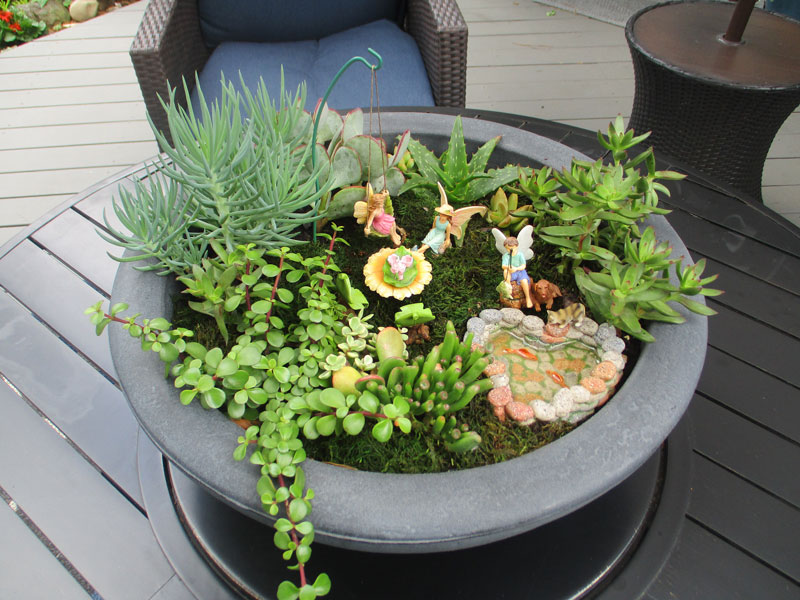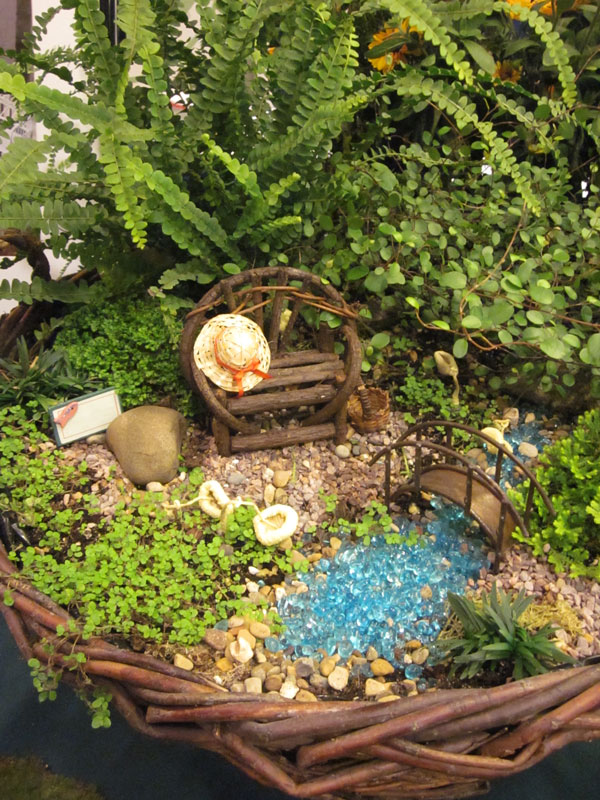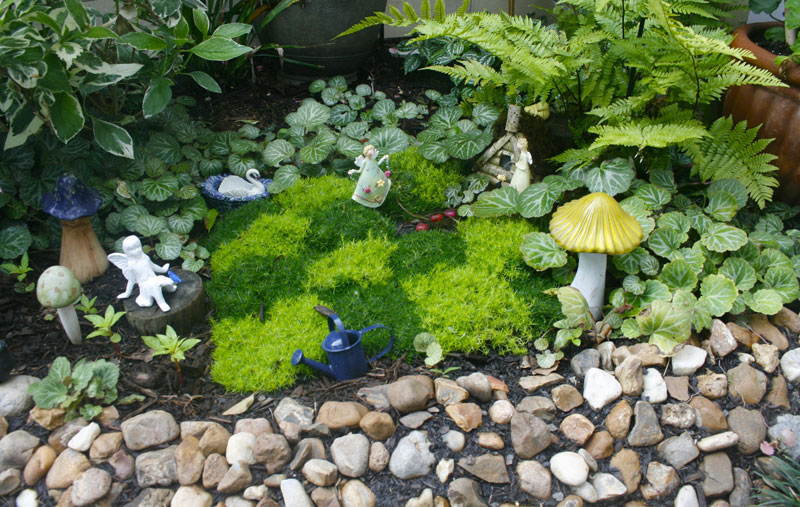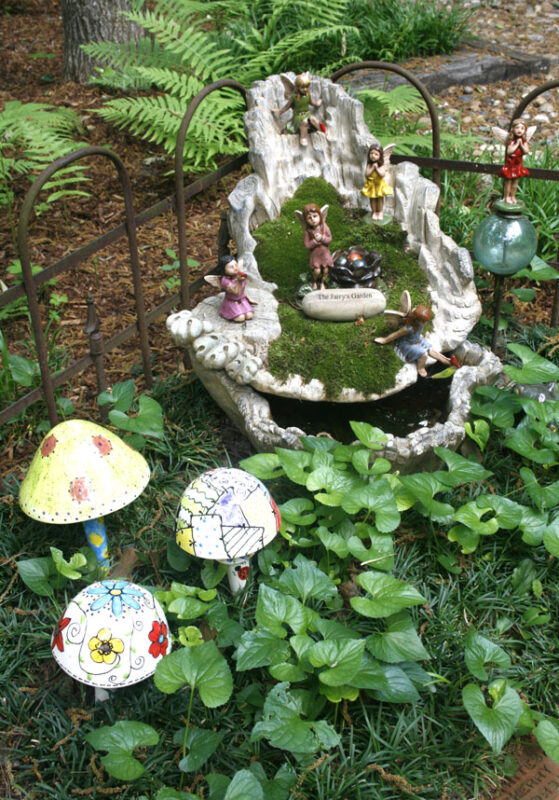Fairy garden – ready for occupancy – by Diane Morey Sitton
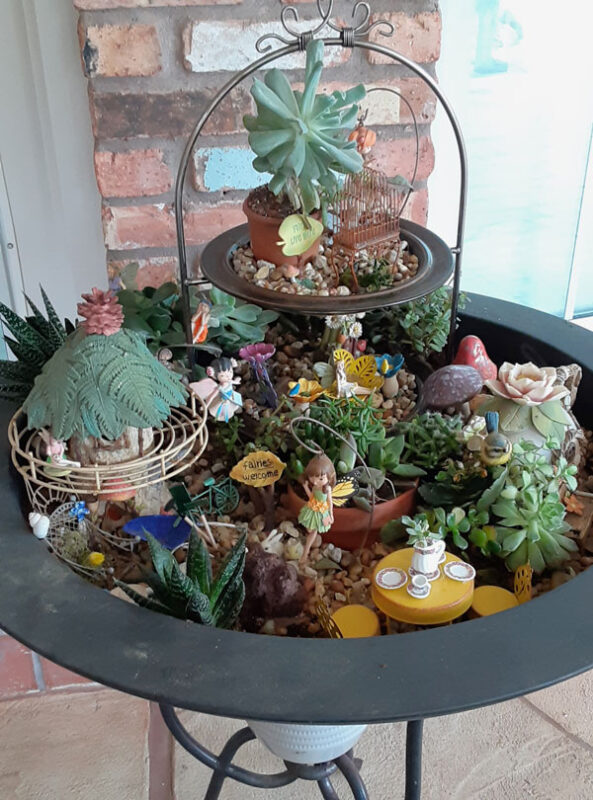
In the realm of make-believe, the best way to lure fairies is by providing a miniature garden containing a fairy house surrounded by diminutive plants and tiny accessories. Word has it fairies like quiet neighborhoods, where they can flit about in the moonlight, casting their pixie dust amongst the fireflies. What’s more, it is said that when a fairy moves into a fairy garden good fortune follows.
While no one has documented an occurrence of an actual fairy setting up housekeeping in a fairy garden, the fantasy of attracting a resident Tinkerbell adds to the allure of these charming little landscapes.
And charming they are!
Look closely and you’ll discover moss-covered cottages, rope ladders, stone steps, meandering streams, and amethyst paths that sparkle like gemstones. Shiny trinkets hang from tiny gates, mini arbors, and teeny fences. There are bistro sets for fairy teatime, and there are twig benches for fairies who want to rest their luminous wings.
But the creativity doesn’t stop there.
Intent on luring their own magical pixies, folks build fairy gardens in wagons and wheelbarrows, in buckets and birdbaths, and in tubs and terrariums. Shallow fairy gardens designed in bowl-shaped pots are common, as are two-story fairyscapes made by stacking one clay pot atop another.
Holding to the belief that gardens and woodlands are the natural realm of fairies, some folks build fairy gardens near large trees and woodland paths. Other folks — perhaps in the hopes of catching a glimpse of a visiting pixie — tuck fairy gardens in the nooks and crannies next to porches and patios.
With so much magic in the air, it may seem hard to abide by rules in building a fairy garden, but there are guidelines to help make the project go smoothly.
Start by deciding where you want to situate the fairy garden. You might want to place it in a container on a covered patio or in a sunny spot in the garden. Next, set a theme. It might be a woodsy retreat, a fairy farmhouse, a cottage garden, or a sparkling fairyland. The theme you choose will guide your selection of plants, furnishings and accessories. Unless you want to plant directly into the garden, select a container. (Pots, tubs, troughs and other containers must have drainage holes and enough depth for at least three inches of soil.)
Once you’ve obtained a container, draw a rough plan based on your theme and the size of the container. After that, shop for plants, potting mix and accessories. The array of plants makes fairy gardens all the more alluring. Popular choices include ferns, moss, and various small succulents. Herbs add to the texture and fragrance, especially petite selections like creeping thyme, known as elfin thyme. Remember, slow-growing evergreen plant species provide year-round coverage for elusive fairies who like to stay hidden.
As with any container garden, select plants with similar light, water and soil requirements, and make sure the potting mix is suitable for the plants you select. Carefully position and water-in the plants before adding the hardscape and accessories.
Once the garden is planted, sit back and think magical thoughts. It won’t be long before you will hear a fluttering of wings and see a scattering of pixie dust … if only in your imagination.

